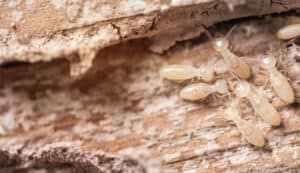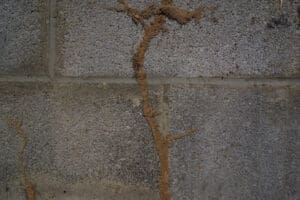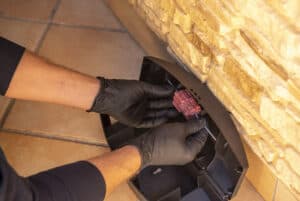When termites are discovered in a home, the first question asked is usually “How much does a termite treatment cost?” Unfortunately, the answer isn’t straightforward.
A termite treatment can be broken down into two steps. The first is to eradicate termites from the property, using a product or combination of products; the second is to install a termite protection system to intercept termites before they can enter the building, offering long-term protection against further termite attack. A number of factors come into play in both stages that affect the cost of the treatment.
Eradicating Termites From the Property
Removing active termites from a property can be achieved using a number of different termiticide products, such as foams, dusts and baits. The choice of product (or products) used, can be influenced by the size of the infestation, the location of the infestation and the termite species present.
With dusts and foams, termites can be controlled in just a few weeks whereas baits typically take a couple of months to deliver results. However, dusts and foams only eliminate the termites from the building, termite baits ensure the nest is destroyed, which is of course a better long-term result.
The cost of this eradication stage is generally influenced by the size of the infestation and the estimated time it will take to eliminate the infestation (the longer it takes the more visits required). Baiting treatments will generally be a bit more expensive. However, it is the second part of the treatment, the installation of the termite protection system that is the more expensive part of the treatment and the one with more variables.
Installing a Long-Term Termite Protection System
The second part of a termite treatment, installing a termite protection system, is usually the larger portion of the overall cost as it’s a job requiring more time, tools and product. While there are a few options on the market, the main two kinds of termite protection system are:
- Liquid soil treatment – where termiticide is applied to the soil to create a treated zone around the perimeter of the property;
- Monitoring/baiting system – where termite baits are placed in locked bait stations in the ground, which intercept termites as they forage in the soil.
Whilst liquid soil treatments are a more expensive to install, they have lower ongoing costs. Installing a baiting/monitoring system is quicker (and cheaper), but requires regular inspections of the bait throughout the year, in addition to the annual termite inspection of the building.
7 Questions That Determine the Cost of a Termite Treatment
1. How Big is the Property?
Generally speaking, the larger the home, the larger the perimeter will be. Homes with a larger perimeter will take longer to install a termite protection system, whether it’s a soil treatment or baiting system.
2. How Was the Building Constructed?
Most homes in Central Victoria will be either built on a concrete slab or built on piers that sit above the ground. Homes built on a slab will usually require just the perimeter to be treated. One exception is homes built on in-fill concrete slabs; in this case, the slabs need to be drilled along the internal walls and termiticide injected below the slab. Homes built on piers are easy to inspect for termites via the subfloor, but installing a termite protection system requires more effort as the subfloor needs to be treated in addition to the perimeter. For a large property, this can quickly ramp up the overall cost.
3. How Deep are the Foundations?
If a liquid soil treatment is being applied, the termiticide liquid needs to go down into the soil 5 cm below the top of the foundations (called footings). If the footings are deep in the soil, it means more soil needs to be removed to expose them, at a greater labour cost.
4. What’s the Soil Composition?
Soil type may sound like a minor factor but in fact rocky or clay soils are no good for liquid soil treatments. For a liquid soil treatment to be effective, the product has to mix evenly in the soil. If the soil around the perimeter of a property is heavy clay or rocky, it can be replaced with a flowing sandy loam before treatment. However, digging and replacing soil incurs significant costs – in which case, a baiting/monitoring system may be the better option.
5. Are There Any Hard Surfaces Around the Building?
Any pavers around the building will need to be pulled up to allow the treatment to be applied and then re-laid. If tiles or concrete surrounds the building they will need to be cut or drilled and injected, to allow the soil to be treated. The amount of work required will impact the cost.
6. What are the Environmental Conditions?
Other environmental factors come into play. For example, is the home built on a slope? Is there a waterway nearby? Are there any drainage issues? A termite professional will need to assess not just the individual property but the wider environmental picture when determining the most suitable choice of termite protection system.
7. What Product Will be Used?
As with any professional pest control product, a number of brands exist on the market. At Go Pest, we only use Termidor, the leading termite product on the market, which is backed by a $2 million dollar product warranty. We use the best product to ensure we deliver the best results for our customers, which means it may cost a little more than other pest control companies that use generic termiticides without a track record of positive results.
So, how much does a termite treatment cost? Well, the answer is it depends on all of the above. The only way to get an accurate quote is to have your property assessed by a professional in person. Choosing a reputable company with the appropriate licences and insurance is the best way to ensure your termite treatment will be successful in the long term and that you get the best value for money.
Call us at Go Pest for a free quote and discuss the treatment options available for you and your home.




